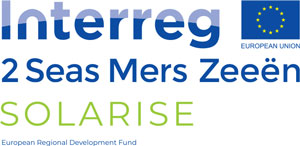The Send Lab in Breda
Jack Doomerniks is an Avans Lecturer in Smart Energy and the man behind the Avans Smart Energy Delivery Lab (or SenD lab). This initiative is comparable to the planned Living Lab in Middelburg.

The Academy for Energy & ICT, along with the Centre for Expertise on Sustainable Innovation, have founded the Smart Energy Delivery Lab, a modularly built lab, the first three (of five) modules of which were built as part of LA on the Lovendijkstraat in late 2018. Market research among suppliers and users has been carried out. In addition to the required hardware and software, a full package of learning modules is delivered that can easily be integrated into the curriculum.
Goal: innovation (research), learning (by students) and working (giving access to the field and spreading applications). In the future, lab applications at home level and neighbourhood level (energy supply and storage) should also be possible. There are similar labs in Aken and Genk (Energyville).
User pattern still to be established (dynamic load), so demand-response not yet possible. Necessary later for balancing issues.
Middelburg model: consumption of energy from the network, no delivery to the network. Sustainable energy usage or storage.
Storage: MOST (experiment in Denmark, energy storage at molecular level).
In-depth details are provided in the market research report.
- PV emulator: simulates energy production and sends the real amount of energy through to an inverter. (About 1kW: 300W of usage, 700W to battery)
- Inverter: DC – AC (Steca)
- DC batteries (Sonen): charges both sides
- Daikin heating pump + boiler


- Real PV: number of panels.
- Powerwall/Tesla.
- Low capacity radiators.
- Auto (Lotus): as an extra battery: two ways (V2G). Not yet connected
- Disconnected ventilation system: not yet present, in planning.
- Experimental wall, connectable to motors, not yet present.
In a later feasibility study, we will check: Which pilot plant Middelburg could buy, looking at the profile of their students and the knowledge present within the different educational facilities.
Short scan:
- HZ Engineering covers Energy, but is located in Vlissingen. Possibility to cooperate with Construction/Civil engineering.
- MBO.
- University College.
- Closet left and on laptop: energy techniques: different emulation packages, to plug in wind energy for example (wind, important to Zeeland, off shore).
- Power delivery meter, management through Skada, PLC.
- Closet right: mixer: continuous and discontinuous delivery.
HS and Avans can exchange students based on Smart Solar. The proposition is that Jack Doomernik and Tiny Maenhout further investigate the matter during the feasibility study.

Visit to EHV
Click here to learn more
Vertigo Building: TU Eindhoven, Construction faculty. Plaza Vertigo, Groene loper 6, Eindhoven.
Menno van den Donker provides an SEAC presentation zooming in on PV, on water, on infra and – in the future – on land and on buildings. Municipalities can register for the presentation, to share knowledge on energy data and business cases.
Example projects:
- Solar Highways, bifacial: multiple functions: sound and energy.
- The benefit of this bifacial feature is that it means that a southern orientation is no longer required.
- Connection towards Middelburg: energy wall. There used to be a wall near the station, to shield the walkway to the campus. This could serve three functions: sound, protection and energy. Focus point: involving citizens is a great motivator, for example by providing free energy in certain locations.
- Zon op Dijk: a multipurpose use: green levee, the grass keeps the levee in mint condition.
Issues raised by Menno:– The construction of special panels could raise problems not only for production and sale, but also for installation. The market has a lot to learn on the subject.– Maintenance: panels are stable products. After 30 years, 90% is still operational. Key takeaway: BAPV is easier to maintain than BIPV.
PHOTO GALLERY
click on the pictures to start the slideshow










